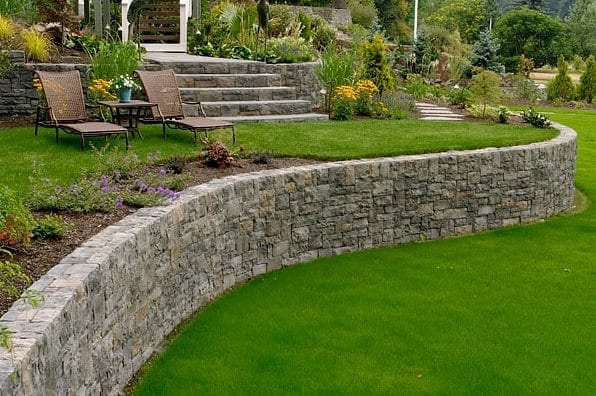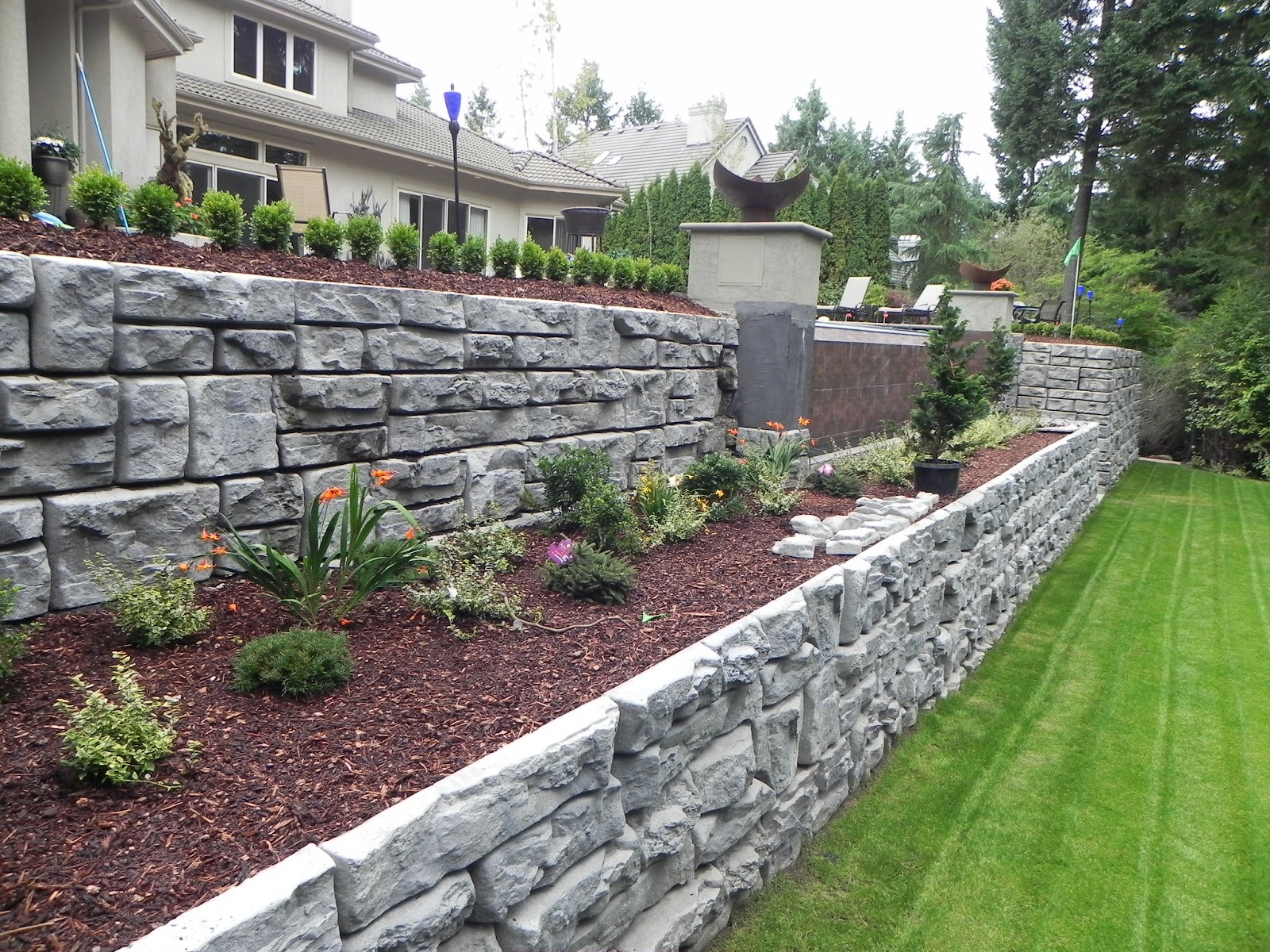Keeping Walls Sunshine Coast: Innovative Solutions for Erosion Control
Enhancing Residential Property Security: The Role of Retaining Walls in Soil Retention and Disintegration Control
Maintaining wall surfaces stand as silent guardians, playing an essential role in dirt retention and disintegration control. By checking out the nuances of different kinds, style considerations, building and construction strategies, and upkeep ideas associated with retaining wall surfaces, a deeper understanding of their pivotal duty in improving building security emerges.
Significance of Retaining Walls in Security
The importance of preserving walls in making certain stability within landscapes can not be overemphasized. Keeping wall surfaces play a vital function in holding back dirt, preventing erosion, and developing level surfaces in sloped areas. By giving structural support, preserving walls help to rearrange side pressure triggered by dirt, avoiding landslides and slippage. Along with boosting the aesthetic charm of a home, retaining wall surfaces add to the general safety and security and functionality of outdoor rooms.
Preserving wall surfaces are particularly vital in unequal or sloping surfaces where dirt disintegration is a common occurrence. Without sufficient support, dirt disintegration can cause the deterioration of landscapes, jeopardizing the stability of structures and presenting threats to citizens. Maintaining walls function as obstacles, supporting the dirt and avoiding it from moving downhill during heavy rainfall or other environmental stress factors.
Furthermore, retaining wall surfaces supply long-lasting benefits by decreasing maintenance prices related to soil erosion and land instability. By buying properly designed keeping walls, homeowner can guarantee the longevity and sustainability of their landscapes while advertising a visually enticing and risk-free environment.

Sorts Of Retaining Walls for Disintegration Control
Generally used in landscaping and civil design jobs, various sorts of maintaining walls act as efficient solutions for disintegration control in diverse surface conditions. Gravity preserving wall surfaces are durable structures that count on their weight to withstand the stress of the soil behind them. They appropriate for low to medium height applications and are commonly made from concrete or stone. Cantilever preserving walls, on the various other hand, are created with a thicker base and make use of a bar arm to stand up to the soil stress. These wall surfaces are generally utilized in locations where room is limited.
For taller wall surfaces or where area is a constraint, anchored keeping wall surfaces are frequently used. These wall surfaces use cables or strips that are anchored right into the soil or rock behind the wall to supply added support. Another type, the sheet stack preserving wall, is perfect for areas with soft soil. Retaining Walls Sunshine Coast. These wall surfaces include interlocking sheets that are driven into the ground to develop a barrier against dirt erosion. When choosing the ideal kind of maintaining wall for erosion control, factors such as soil make-up, wall surface height, and site problems should be meticulously thought about to make sure long-lasting stability and efficiency.
Style Considerations for Soil Retention
Including the principles of structural engineering and ecological sustainability is essential when thinking about design elements for effective soil retention solutions. When designing for soil retention, it is important to analyze the certain requirements of the site, including soil structure, water drainage patterns, and incline stability. The elevation and area of the retaining wall are essential variables that influence the total design. Designers should also think about the pressure put in by the retained dirt and possible lateral loads to ensure the structure's stability with time.
Furthermore, the material option for the maintaining wall surface is crucial in improving longevity and performance. Concrete, timber, gabion baskets, and natural rock are usual materials utilized in retaining wall building and construction, each with its special advantages and considerations. Appropriate drainage devices, such as weep holes and French drains, need to be incorporated into the go to this web-site layout to stop water accumulation behind the wall surface, which can cause structural failure and disintegration.
Building Strategies for Retaining Walls
When applying layout factors to consider for effective soil retention, the building methods for preserving wall surfaces play an important function in making sure architectural stability and long-lasting stability. The success of a maintaining wall surface mainly depends upon the construction approaches utilized. One common technique is the gravity wall surface, which depends on the weight and mass of the wall itself to resist the stress of the preserved dirt. Gravity wall surfaces appropriate for reduced to medium heights and are fairly very easy to construct. Retaining Walls Sunshine Coast.
An additional commonly used building and construction method is the cantilevered wall, which makes use of a concrete slab foundation that expands backwards right into the kept soil. This layout offers added security and is suitable for tool to high keeping wall surfaces. For taller structures, reinforced dirt techniques such as making use of geogrids or soil nails can be employed to improve the wall's stamina and stability.

Maintenance Tips for Residential Or Commercial Property Security
To ensure long-term building stability, routine upkeep practices are vital for maintaining the honesty of retaining walls and stopping disintegration concerns. Inspecting keeping wall surfaces periodically is important to recognize any kind of signs of damage, such as fractures, bulging, or leaning. Any type of problems need to be resolved promptly to avoid additional damage. Cleansing the surface of the keeping walls can likewise help maintain their structural stability by eliminating dirt, debris, and vegetation that could compromise the wall in time (Retaining Walls Sunshine Coast).
Along with visual evaluations and cleansing, it is crucial to inspect the drainage systems connected with the keeping walls. Making certain that drains are free from obstructions and operating appropriately can avoid water build-up behind the walls, which can result in pressure and possible failure. Properly working drainage systems are crucial for managing water circulation and reducing the threat of erosion.
Frequently keeping and monitoring maintaining walls according to these ideas can expand their lifespan and add to the look at more info overall stability of the residential or commercial property.
Verdict
In verdict, preserving wall surfaces play a crucial duty in boosting property security by protecting against dirt disintegration and maintaining soil in place. Normal upkeep of maintaining walls is vital to guarantee long-term security and defense against erosion.
For taller wall surfaces or where room is a restriction, anchored retaining wall surfaces are frequently utilized. These walls utilize cords or strips that are anchored into the dirt or rock behind the wall to offer additional assistance. When choosing the suitable kind of maintaining wall surface for disintegration control, elements such as soil structure, wall elevation, and site problems need to be thoroughly considered to make sure long-lasting security and effectiveness.
One usual technique is the gravity wall surface, which counts on the weight and mass of the wall surface itself to resist the stress of the retained dirt. Cleaning the surface area of the retaining wall surfaces can also assist maintain their structural honesty by eliminating dust, debris, and plant life that might damage the look at here wall over time.